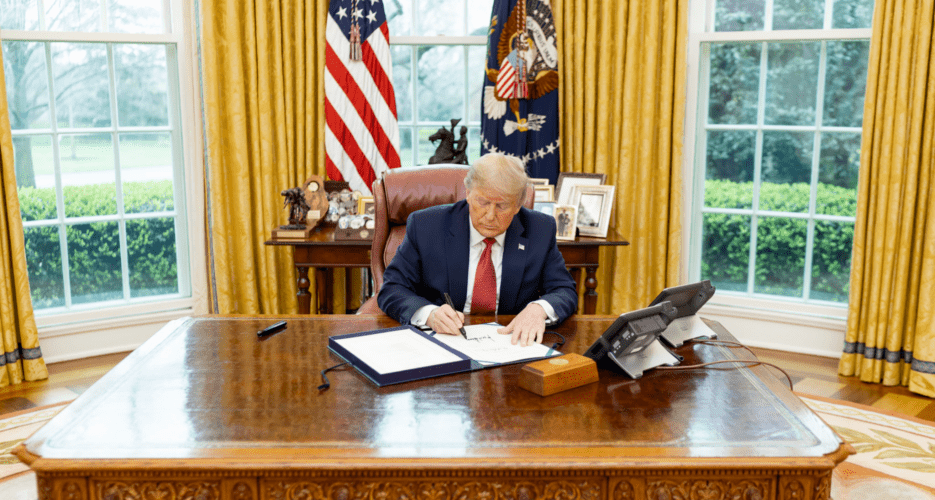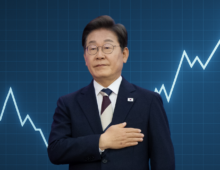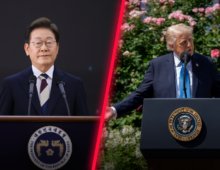|
Analysis US conservative agenda reveals possible cracks in alliance with South KoreaProject 2025 suggests prioritizing Taipei over Seoul in a conflict, likely stoking South Korea’s abandonment fears Benjamin A. EngelJuly 16, 2024  Then-U.S. President Donald Trump sits in the Oval Office, March 25, 2020 | Image: Trump White House Archived via Flickr (PDM 1.0) As the 2024 U.S. presidential election approaches, the possibility of Donald Trump’s return to the White House has raised concerns among South Korean conservatives about the future of U.S.-ROK relations. Project 2025, an initiative by the Heritage Foundation, an American conservative think tank, aims to provide a “governing agenda” for the next conservative presidential administration. Among its agenda, Project 2025 suggests that South Korea may have to take on a greater role in its own conventional defense against North Korea while also hinting at the possibility of the U.S. prioritizing the defense of Taiwan over supporting South Korea in a conflict. WHAT IS PROJECT 2025? Project 2025 is outlined in a comprehensive edited volume entitled “Mandate for Leadership: The Conservative Promise.” The plan has drawn significant attention from American progressives, who cite it as evidence of the Republican Party’s right-wing agenda. These criticisms have prompted Trump to disavow Project 2025, fearing it may alienate independent voters. However, many of Project 2025’s contributing authors served in the first Trump administration and will likely join his government again if he wins in November. Despite Trump’s claimed lack of affiliation with the project, the policies outlined in Project 2025 provide valuable insights into a potential second Trump administration.  Then-U.S. President Donald Trump meets with Chinese leader Xi Jinping during the G20 summit in Osaka, June 28, 2019 | Image: Trump White House Archived via Flickr (PDM 1.0) CHINA: THE PRIMARY CONCERN Despite Trump’s reported 2020 statements suggesting a willingness to “blow up” the U.S.-South Korea alliance and demand increased defense burden-sharing from South Korea, Project 2025 takes a different approach. The project’s contributors consistently identify China, which they often label “Communist China,” as the preeminent concern of U.S. foreign and defense policy. In that vein, they view South Korea as a key partner in balancing against Beijing. Christopher Miller, the former acting secretary of defense under Trump, argues in his chapter that China poses the “most severe immediate threat.” He emphasizes the importance of U.S. allies, including South Korea, in the first island chain in the East and Southeast China Seas, describing them as crucial components of a “balancing coalition” against China. Similarly, Kiron Skinner, former director of policy planning at the State Department under Trump, asserts in her chapter that China is the main priority in U.S. foreign policy. She identifies South Korea and Japan as “critical allies for ensuring a free and open Indo-Pacific.” Although not a contributor to “Mandate for Leadership,” Elbridge Colby, the deputy assistant secretary of defense for strategy and force development under Trump, stated at a Heritage Foundation event related to Project 2025 that South Korea is a “model” ally with a “tremendous defense industry” that is spending a significant amount on defense. Moreover, Miller and Skinner identify North Korea as a threat and do not indicate any willingness to accept less than North Korea’s complete denuclearization. Their collective stance may dampen the likelihood of Trump resuming his confrontational approach toward defense burden-sharing negotiations with allies. It may also alleviate Seoul’s concerns about Trump attempting to strike a bargain with North Korean leader Kim Jong Un to the detriment of South Korea.  Then-U.S. President Donald Trump and North Korean leader Kim Jong Un meet in the Freedom House at the Korean Demilitarized Zone, June 30, 2019 | Image: Trump White House Archived via Flickr (PDM 1.0) IMPLICATIONS FOR SOUTH KOREA While Project 2025 does not echo some of Trump’s harsher comments on South Korea, it does argue for a diminished U.S. role on the Korean Peninsula. While Miller identifies South Korea as an ally in balancing China, he argues that the U.S. should prioritize defending Taiwan “before allocating resources to other missions, such as simultaneously fighting another conflict.” This stance suggests that if North Korea were to invade South Korea as China invaded Taiwan, the U.S. would prioritize Taiwan’s defense, leaving South Korea to defend itself largely alone. Miller confirms this by suggesting South Korea should “take the lead in its conventional defense against North Korea.” Moreover, Miller argues that “U.S. allies must take far greater responsibility for their conventional defense” and that “burden-sharing” should be a “central part of U.S. defense strategy.” Although it remains unclear if his stance regarding “burden-sharing” refers to increased payments by South Korea to the U.S. as part of the Special Measures Agreement, it opens the possibility of Trump demanding $5 billion from South Korea, as he did at the end of his first term. Read optimistically, Project 2025 contributors highlight the importance of Asian allies like Seoul in balancing Beijing, suggesting that South Korea may have allies in the next Trump administration who oppose a withdrawal of U.S. troops from the peninsula. On the other hand, a pessimistic interpretation suggests that the U.S. may demand South Korea take on a greater burden while decreasing its commitment to aid Seoul in certain contingencies. This scenario could heighten South Korea’s abandonment concerns and trigger further discussions of nuclear weapons development. However, Project 2025’s contributors do not provide any signals that a second Trump administration would acquiesce to South Korean nuclearization, despite comments from other Trump allies, such as Colby and former U.S. Secretary of State Mike Pompeo, suggesting otherwise. For instance, while Miller strongly advises the U.S. to strengthen its own nuclear deterrent, he seems to deliberately define Seoul’s role as “conventional” when discussing South Korea taking on greater responsibility for its own defense. Although Skinner does not explicitly mention South Korean nuclearization, she argues that remaining committed to North Korea’s complete denuclearization is critical to the “future of global nonproliferation.” This stance implies her dedication to the nuclear non-proliferation regime and suggests that she would not support a nuclear South Korea.  South Korean President Yoon Suk-yeol meets with former U.S. Secretary of State Mike Pompeo, May 23, 2024 | Image: ROK Presidential Office IMPLEMENTING PROJECT 2025 Project 2025 reveals a potential diversity of views in a second Trump administration. Given Trump’s previous remarks about the U.S.-South Korea alliance, his advisers may attempt to temper his instincts to take an aggressive stance toward South Korea. However, if Trump insists on a particular course of action, it remains uncertain whether the bureaucracy could effectively resist. Project 2025 provides valuable insight into this matter. A key component involves reclassifying federal workers as political appointees, allowing the administration to replace them with individuals more loyal to Trump. Additionally, Project 2025 seeks to recruit and train people to fill the void left by the purge, suggesting that a second Trump administration will stress loyalty and adherence to directives from above. Foreign policy will unlikely be exempt from this effort. Skinner bemoans the “large swaths of…left-wing” officials in the State Department who obstruct conservative presidents from implementing their preferred policies — a sentiment that echoes Trump’s “deep state” rhetoric. She forcefully argues for a complete department overhaul and demands resignations from all leadership and ambassador positions on the second Trump administration’s first day in office. Perhaps the most crucial takeaway from Project 2025 is that while career bureaucrats in the first Trump administration may have helped guide and temper some of Trump’s worst impulses, a second Trump administration may lack such guardrails. Edited by John Lee As the 2024 U.S. presidential election approaches, the possibility of Donald Trump’s return to the White House has raised concerns among South Korean conservatives about the future of U.S.-ROK relations. Project 2025, an initiative by the Heritage Foundation, an American conservative think tank, aims to provide a “governing agenda” for the next conservative presidential administration. Get your
|
|
Analysis US conservative agenda reveals possible cracks in alliance with South KoreaProject 2025 suggests prioritizing Taipei over Seoul in a conflict, likely stoking South Korea’s abandonment fears  As the 2024 U.S. presidential election approaches, the possibility of Donald Trump’s return to the White House has raised concerns among South Korean conservatives about the future of U.S.-ROK relations. Project 2025, an initiative by the Heritage Foundation, an American conservative think tank, aims to provide a “governing agenda” for the next conservative presidential administration. © Korea Risk Group. All rights reserved. |











